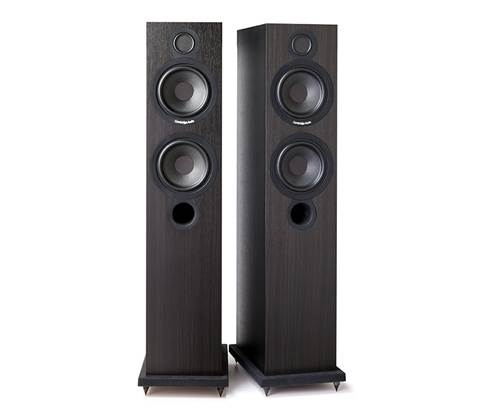The Aero 6 is the floor standing version of our best budget
standmounter; David Price brings you the long and short of it
The Aero 6 is a larger, floor standing version of the same
design, deploying identical drive units with the far larger cabinet volume that
comes from having a big box that sits securely on terra firma!

Sound
is as close to big three-way speakers as you’ll get for $1647
Many will expect the Aero 6 to be better, then; after all,
it’s nearly twice the price and has far more air inside its capacious cabinet.
Trouble is, in doing a floor standing version of a smaller stand mount speaker,
you open yourself up to a problem that’s never easily solved, especially in
budget designs, which is how to keep the cabinet under control. The thing is,
that bigger box might let the bass driver move air easier, but there’s also the
worry that it will also move the cabinet. This is the nub of the problem for
any larger loudspeaker – how to keep those expanses of timber from flexing and
resonating in time to the music, sullying the sound.

Apparently,
the secret’s in the cone material...
On a small box like the Aero 2, this isn’t such a big
problem, as there’s less of it. But the Aero 6 sports two 165mm bass units
producing a lot more energy than the 2’s single, identically sized driver, and
has a whopping great (in relative terms) box to keep in line. The performance
of the bigger box is a real issue that will ultimately determine the success or
failure of the speaker.
Cambridge Audio’s Aero series does something very smart that
confers it a significant advantage in terms of sound – it uses a single 46mm
BMR driver to take care of treble and midband frequencies. The aforementioned
device works from 250Hz all the way up to 22kHz, and it gives the Aero a
theoretical edge –namely that the crossover point of the loudspeaker is a good
long way from where the ear is most sensitive, in the 1 to 2kHz region. This is
precisely where most other two-way speakers cross over, so by shunting the
crossover point down the frequency band, the sticky bit where the bass driver
kicks in is nowhere near as subjectively problematic. And cleverly, the BMR
handles mid and treble frequencies, leaving the hardest
working part of the package – the woofer(s) – to get on with playing the bass,
without having to worry about the midband as well.

Those twin bass
units both feature paper cones
And that’s before you even consider how the BMR works; its
excellent natural dispersion pattern comes from the fact that it creates much
of its sound from surface vibration, in addition to conventional in-out
pistonic motion. This means it diffuses around the room more easily and doesn’t
have any sort of obvious ‘sweet spot’ like conventional tweeters. I found it
worked exceptionally nicely in the Aero 2; not only is it well integrated with
the bass driver, but it is the latest version of the BMR, which no other manufacturer
is currently using.